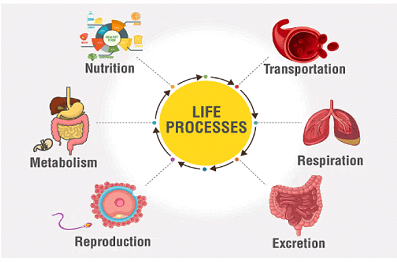Which of the following is a property of ionic compounds?
The following are the properties of ionic compounds
Introduction to Ionic Compounds
Ionic compounds are chemical substances formed by the electrostatic attraction between positively and negatively charged ions. This attraction, known as an ionic bond, is one of the strongest types of chemical bonds. Ionic compounds typically form between metals and non-metals, with the metal atom donating electrons to become a positively charged cation, and the non-metal atom accepting electrons to become a negatively charged anion.
Example of Ionic Compound Formation
When sodium (Na) reacts with chlorine (Cl), sodium donates one electron to chlorine:
Na → Na+ + e– (Sodium loses an electron to form a cation)
Cl + e– → Cl– (Chlorine gains an electron to form an anion)
The resulting ions, Na+ and Cl–, are attracted to each other, forming the ionic compound sodium chloride (NaCl) – common table salt.
Physical Properties of Ionic Compounds
Ionic compounds share several distinctive physical properties that arise from their crystal lattice structure and the strong electrostatic forces between ions. Understanding these properties is crucial for exam success.
1. High Melting and Boiling Points
Ionic compounds typically have high melting and boiling points due to the strong electrostatic forces between oppositely charged ions in the crystal lattice. These forces require significant energy to overcome.
Exam Tip
Remember that melting points of ionic compounds generally range from 300°C to 1000°C. Compare this with molecular compounds that often melt below 300°C.
| Ionic Compound | Melting Point (°C) | Boiling Point (°C) |
|---|---|---|
| Sodium Chloride (NaCl) | 801 | 1413 |
| Calcium Oxide (CaO) | 2572 | 2850 |
| Magnesium Oxide (MgO) | 2852 | 3600 |
2. Crystal Lattice Structure
Ionic compounds form crystal lattices where each ion is surrounded by ions of opposite charge in a three-dimensional arrangement. This orderly arrangement gives ionic compounds their characteristic crystalline structure.
Figure 1: Crystal lattice structure of sodium chloride showing the alternating Na+ and Cl- ions
3. Solubility in Water
Many ionic compounds are soluble in water due to the high dielectric constant of water, which reduces the attractive forces between ions. When dissolved in water, ionic compounds dissociate into their component ions.
For example, when NaCl dissolves in water:
NaCl(s) → Na+(aq) + Cl–(aq)
Important Exceptions
Not all ionic compounds are soluble in water. General solubility rules to remember:
- Most sodium, potassium, and ammonium salts are soluble
- Most nitrates (NO3–) are soluble
- Most sulfates (SO42-) are soluble except BaSO4, PbSO4, and CaSO4
- Most carbonates (CO32-), phosphates (PO43-), and sulfides (S2-) are insoluble
- Most hydroxides (OH–) are insoluble except NaOH and KOH
4. Electrical Conductivity
Ionic compounds do not conduct electricity in the solid state as the ions are fixed in position and unable to move. However, they conduct electricity when:
- Molten (melted) state: Ions are free to move and can carry electrical charge
- Aqueous solution: Ions are dissociated and mobile in water
Example: Electrical Conductivity Test
A simple experiment to test conductivity involves using a conductivity meter with two electrodes connected to a light bulb:
- Solid NaCl: Does not conduct electricity; bulb does not light
- Molten NaCl: Conducts electricity; bulb lights up
- NaCl dissolved in water: Conducts electricity; bulb lights up
5. Brittleness
Ionic compounds are typically hard but brittle. When force is applied, layers of ions can shift, bringing ions of like charge adjacent to each other. The resulting repulsion causes the crystal to shatter.
Figure 2: Illustration of why ionic compounds are brittle
6. Density
Ionic compounds generally have high densities due to the close packing of ions in the crystal lattice. The strong interionic forces pull the ions close together, resulting in a dense structure.
Chemical Properties of Ionic Compounds
In addition to their physical properties, ionic compounds also exhibit distinctive chemical behaviors. Understanding these properties helps explain their reactions.
1. Reactions in Solution
When ionic compounds dissolve in water, they dissociate completely into their component ions. These ions can then react with other ions in solution.
Example: Precipitation Reactions
When solutions of silver nitrate and sodium chloride are mixed, a precipitation reaction occurs:
AgNO3(aq) + NaCl(aq) → AgCl(s) + NaNO3(aq)
In ionic form: Ag+(aq) + NO3–(aq) + Na+(aq) + Cl–(aq) → AgCl(s) + Na+(aq) + NO3–(aq)
The insoluble silver chloride (AgCl) precipitates out as a solid.
2. Double Displacement Reactions
In these reactions, the cations and anions of two different ionic compounds exchange partners, often resulting in a precipitate or gas formation.
Example: Formation of Barium Sulfate
When barium chloride solution is mixed with sodium sulfate solution:
BaCl2(aq) + Na2SO4(aq) → BaSO4(s) + 2NaCl(aq)
The barium sulfate (BaSO4) forms as an insoluble white precipitate.
3. Neutralization Reactions
When an acid and a base react, they form a salt and water. This is a common type of reaction involving ionic compounds.
Example: Hydrochloric Acid and Sodium Hydroxide
When hydrochloric acid reacts with sodium hydroxide:
HCl(aq) + NaOH(aq) → NaCl(aq) + H2O(l)
In ionic form: H+(aq) + Cl–(aq) + Na+(aq) + OH–(aq) → Na+(aq) + Cl–(aq) + H2O(l)
This can be simplified to: H+(aq) + OH–(aq) → H2O(l)
Common Examples of Ionic Compounds
Here are some common ionic compounds, their formulas, and their everyday applications:
| Ionic Compound | Formula | Common Uses |
|---|---|---|
| Sodium Chloride | NaCl | Table salt, food preservative, de-icing roads |
| Calcium Carbonate | CaCO3 | Antacids, chalk, limestone for construction |
| Sodium Hydroxide | NaOH | Drain cleaners, soap manufacturing, paper production |
| Potassium Nitrate | KNO3 | Fertilizers, food preservatives, fireworks |
| Magnesium Sulfate | MgSO4 | Epsom salts, soil supplement, medical applications |
| Copper Sulfate | CuSO4 | Algaecide, fungicide, electroplating |
Factors Affecting Properties of Ionic Compounds
1. Lattice Energy
Lattice energy is the energy released when gaseous ions come together to form a solid ionic compound. It affects properties like melting point and solubility.
Factors affecting lattice energy:
- Charge of ions: Higher charges lead to stronger attractions and higher lattice energy
- Size of ions: Smaller ions create stronger attractions and higher lattice energy
Exam Tip
The relationship between lattice energy (U) can be approximated by:
U ∝ (Q1 × Q2)/r
where Q1 and Q2 are the charges of the ions, and r is the distance between them.
2. Hydration Energy
Hydration energy is the energy released when ions are surrounded by water molecules. It plays a crucial role in determining solubility.
For an ionic compound to dissolve in water:
Hydration Energy > Lattice Energy
Examination Tips for Ionic Compounds
Key Points to Remember for Exams
- Crystal structure: Remember that ionic compounds form crystal lattices with regular arrangements of cations and anions.
- Physical properties: Be able to explain high melting points, brittleness, and conductivity in terms of the ionic bonding model.
- Chemical equations: Practice writing balanced chemical equations for reactions involving ionic compounds, including ionic equations.
- Solubility rules: Memorize the solubility rules to predict whether a precipitate will form in a double displacement reaction.
- Formulas: Learn how to write correct formulas for ionic compounds by balancing the charges of the constituent ions.
Common Exam Questions
Question 1: Predicting Products
Predict the products when solutions of calcium chloride and sodium carbonate are mixed.
Solution:
CaCl2(aq) + Na2CO3(aq) → CaCO3(s) + 2NaCl(aq)
Calcium carbonate precipitates because it is insoluble in water.
Question 2: Properties Explanation
Explain why solid sodium chloride does not conduct electricity, but molten sodium chloride does.
Solution:
In solid sodium chloride, the ions are fixed in position in the crystal lattice and cannot move. Electrical conductivity requires the movement of charged particles. When sodium chloride is melted, the ions become mobile and can carry electric charge, allowing the molten compound to conduct electricity.
Summary: Key Properties of Ionic Compounds
Physical Properties
- High melting and boiling points
- Crystal lattice structure in solid state
- Many are soluble in water (with notable exceptions)
- Conduct electricity when molten or in aqueous solution, but not in solid state
- Hard but brittle
Chemical Properties
- Dissociate into ions in water
- Undergo double displacement reactions
- Participate in neutralization reactions
- React according to solubility rules
Factors Affecting Properties
- Ion charge and size influence lattice energy
- Balance between lattice energy and hydration energy determines solubility
- Crystal structure determines physical properties like hardness and brittleness



